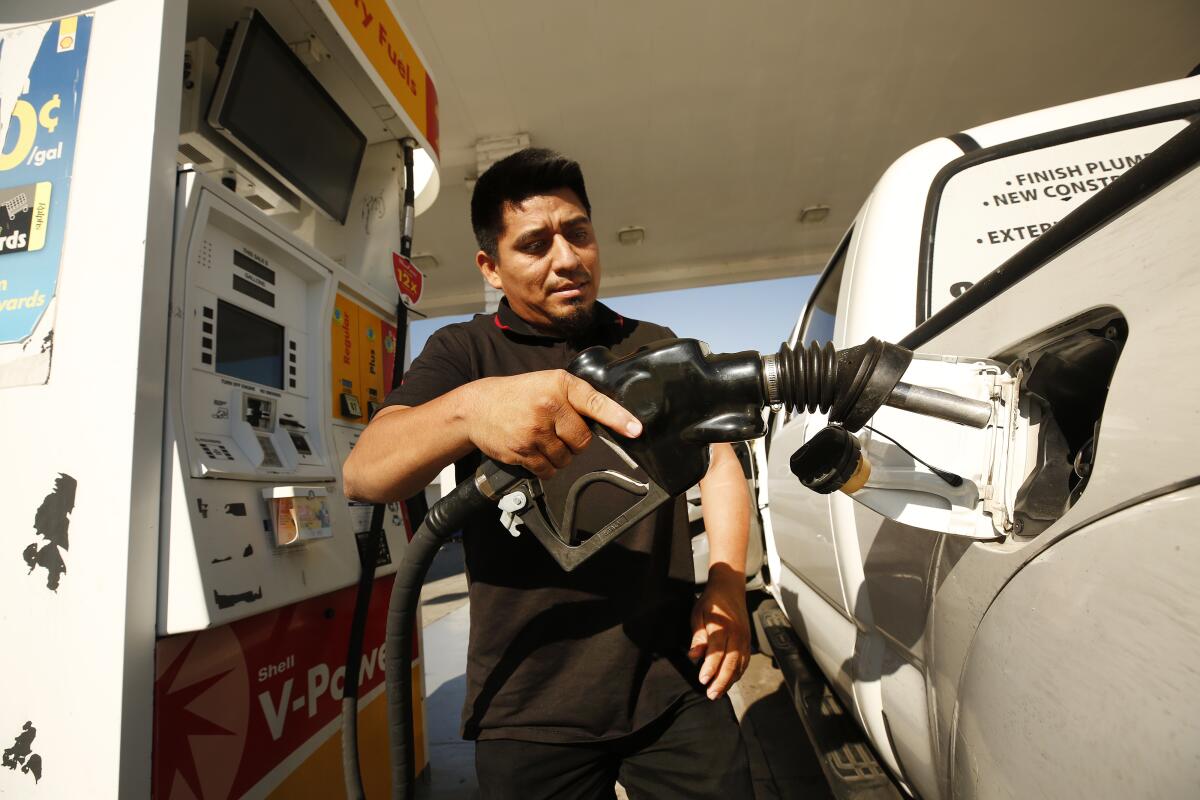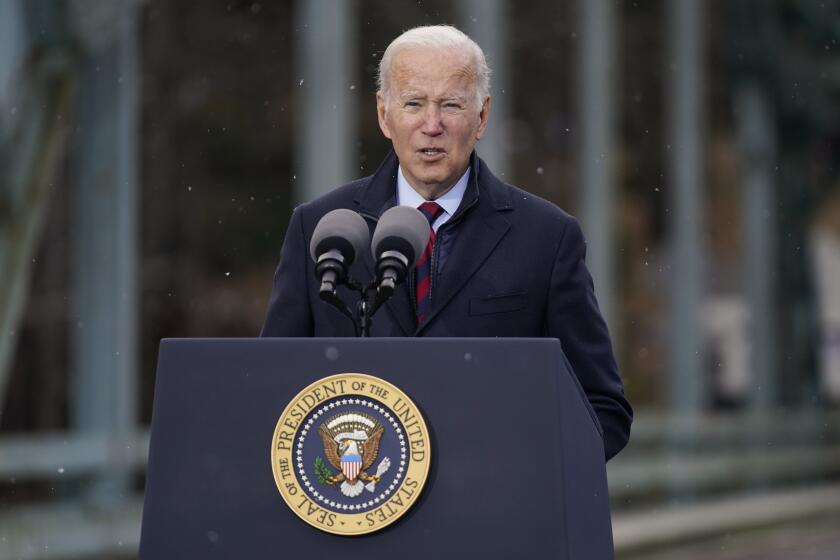Column: Don’t blame politicians for California’s sky-high gas prices. Blame COVID-19

SACRAMENTO — Who can we blame for record-high gasoline prices? Sorry. No one in particular. The worst culprit is COVID-19.
I’d love to blame some politicians, such as Gov. Gavin Newsom.
After all, this governor does look guilty.
The price of practically any commodity is based on the principle of supply and demand. And Newsom has declared all-out war on oil production in California as he leads the state’s fight against global warming.
He has decreed that there’ll be no new gas-burning cars sold in California starting in 2035 and that all oil production will end in the state by 2045. He’ll be long gone from Sacramento by then, but it still sends a message to oil producers that any new investments in California would be like throwing money down an abandoned well.
The governor has also moved to ban new oil drilling within 3,200 feet of homes, schools and healthcare facilities and require emissions monitoring of existing wells within those buffer zones.
But none of that has much if anything to do with skyrocketing gas prices approaching $5 per gallon.
UC Berkeley energy economist Severin Borenstein says that California oil production is virtually irrelevant to the global price of crude.
“California producing more oil would have a negligible effect on gasoline prices,” he says. They’re determined by “world supply and world demand.”
These shocking gas prices were basically set by COVID-19.
Millions of Californians — and people around the world — got locked down and parked their cars when the pandemic struck. Demand for gas slowed to a crawl. So oil companies backed off producing fuel.
Then vaccines arrived. Politicians bowed to public pressure and unlocked people’s lives. Stir-crazy motorists jumped back in their cars and drove off on road trips. Demand for gas escalated. But supplies were low. Oil companies couldn’t — or wouldn’t — keep pace with demand. And prices sped upward.
“When you shut down production, restarting is not as simple as flipping a switch back on,” says Nick Vyas, executive director of the Global Supply Chain Management Institute at the USC Marshall School of Business.
“And it’s not just production. There’s the long supply chain that takes a few months minimum” to crank back up.
“The high cost of gas is primarily the result of disruption during the pandemic,” Vyas says.
Soaring gas prices are one more challenge for residents heading into the second holiday season of the pandemic, with supply chain issues and inflation too.
But California gas prices have always been among the nation’s highest, and now they are at the very top — around $1.25 per gallon above the national average, according to the American Automobile Assn.
Why are prices so high here?
Start with the nation’s highest fuel taxes. Voters can thank themselves for that. Politicians — mainly Democrats — proposed the high state levies, but voters approved them. It’s for a good cause: mainly road construction.
For every gallon of gas, motorists pay nearly 67 cents in state and local taxes. Additionally, there’s an 18.4-cent federal tax, bringing the total government tab to 85.4 cents.
That’s 29 cents higher than other states’ taxes on average, according to the California Energy Commission.
The commission also estimates that oil companies pass along to consumers a 23-cent-per-gallon cost of participating in the state’s climate-fighting cap-and-trade program, which involves buying permits to emit greenhouse gas. Don’t ask.
Similarly, motorists get hit with about 18 cents for the companies’ cost of meeting the state’s low carbon fuel standards.
And 15 cents are added for California’s special anti-smog blends. That allows Southern Californians to see the mountains in summer.
The crude itself is costing a bit more than $2. Refining into gasoline costs an additional $1-plus. Distribution is around 40 cents.
And invariably there’s gouging — especially around holidays.
“Retailers in California charge more than retailers in other states,” Energy Commission spokesperson Lindsay Buckley says. “It’s a free market.”
Biden expresses concern about the difference between pump prices and the cost of wholesale fuel, citing ‘mounting evidence of anti-consumer behavior.’
More than 6 million motorists are expected to hit state highways for Thanksgiving, according to the Automobile Club of Southern California.
“It’s looking like a very busy Thanksgiving,” club spokesman Doug Shupe says. “So many people want to reconnect with loved ones.
“Usually after Labor Day we see prices at the pump start to drop. But this year they’re driving through the fall months, visiting friends and family.”
Expect gas prices to remain high at least through the Christmas and New Year’s holidays, experts say.
The oil industry blames excessive state regulation — a common California business complaint — for high production costs that are passed on to motorists.
“We’re not opposed to using renewable energy, but that transition needs to be well planned,” says Kevin Slagle, spokesman for the Western States Petroleum Assn. “We’re not seeing a lot of planning right now. Our energy future feels a little reckless and expensive. And it’s going to hurt people.”
California oil production has steadily declined since it peaked at 423 million barrels in 1985. In 2020, it produced 148 million barrels of crude, according to CalGEM, the state oil regulatory division.
Why the decline? One major reason is that after more than a century of pumping, many wells have been sucked dry.
“You can only squeeze out so much,” says Uduak-Joe Ntuk, the state supervisor of oil and gas production. “And there haven’t been any new discoveries since the 1960s.”
Roughly 70% of California’s oil is produced in Kern County.
California generates 30% of the oil it burns and imports the rest, mainly from Alaska.
We’ve fallen to the No. 7 state in oil production, far below No. 1 Texas.
But that has little or nothing to do with the price of gas.
More to Read
Sign up for Essential California
The most important California stories and recommendations in your inbox every morning.
You may occasionally receive promotional content from the Los Angeles Times.













